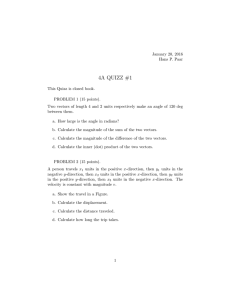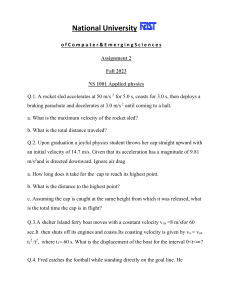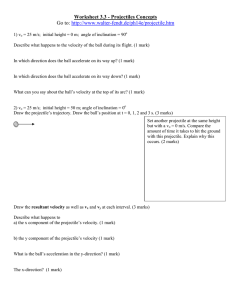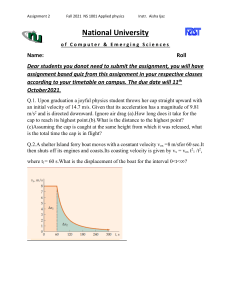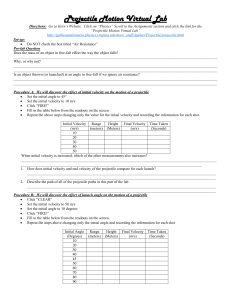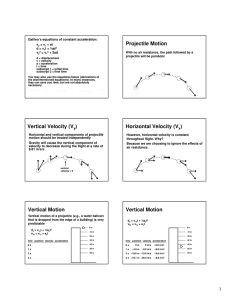Two Dimensional Motion PHYSICS 2A PROCEDURE:
advertisement
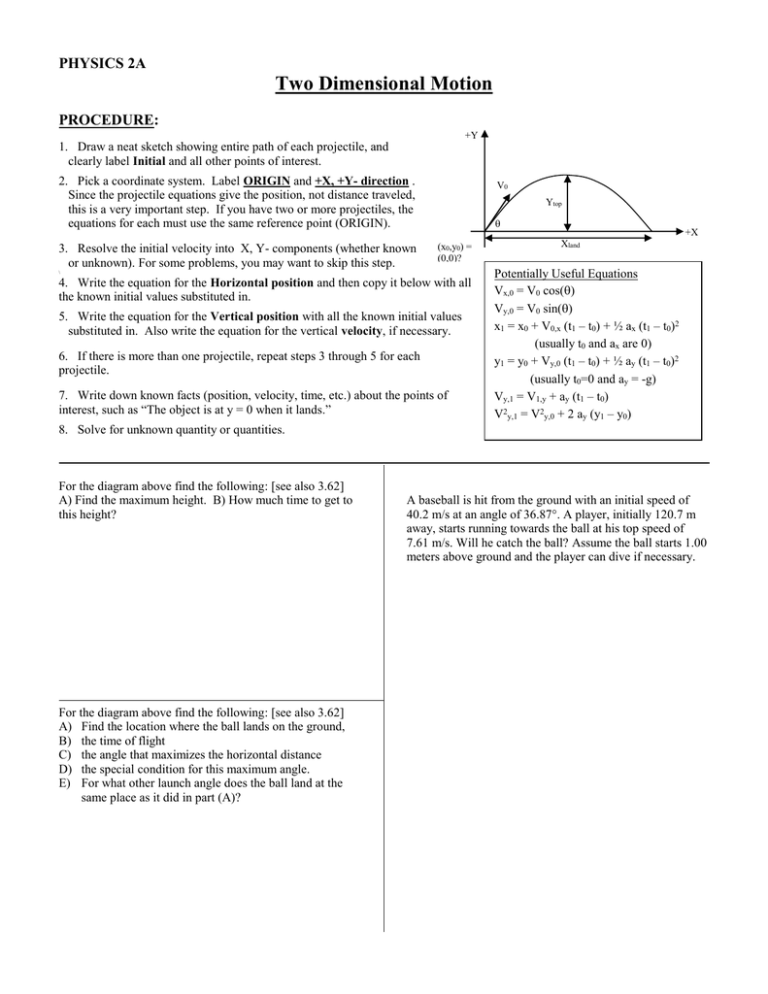
PHYSICS 2A Two Dimensional Motion PROCEDURE: +Y 1. Draw a neat sketch showing entire path of each projectile, and clearly label Initial and all other points of interest. 2. Pick a coordinate system. Label ORIGIN and +X, +Y- direction . Since the projectile equations give the position, not distance traveled, this is a very important step. If you have two or more projectiles, the equations for each must use the same reference point (ORIGIN). 3. Resolve the initial velocity into X, Y- components (whether known or unknown). For some problems, you may want to skip this step. V0 Ytop (x0,y0) = (0,0)? \ 4. Write the equation for the Horizontal position and then copy it below with all the known initial values substituted in. 5. Write the equation for the Vertical position with all the known initial values substituted in. Also write the equation for the vertical velocity, if necessary. 6. If there is more than one projectile, repeat steps 3 through 5 for each projectile. 7. Write down known facts (position, velocity, time, etc.) about the points of interest, such as “The object is at y = 0 when it lands.” +X Xland Potentially Useful Equations Vx,0 = V0 cos() Vy,0 = V0 sin() x1 = x0 + V0,x (t1 – t0) + ½ ax (t1 – t0)2 (usually t0 and ax are 0) y1 = y0 + Vy,0 (t1 – t0) + ½ ay (t1 – t0)2 (usually t0=0 and ay = -g) Vy,1 = V1,y + ay (t1 – t0) V2y,1 = V2y,0 + 2 ay (y1 – y0) 8. Solve for unknown quantity or quantities. For the diagram above find the following: [see also 3.62] A) Find the maximum height. B) How much time to get to this height? For the diagram above find the following: [see also 3.62] A) Find the location where the ball lands on the ground, B) the time of flight C) the angle that maximizes the horizontal distance D) the special condition for this maximum angle. E) For what other launch angle does the ball land at the same place as it did in part (A)? A baseball is hit from the ground with an initial speed of 40.2 m/s at an angle of 36.87°. A player, initially 120.7 m away, starts running towards the ball at his top speed of 7.61 m/s. Will he catch the ball? Assume the ball starts 1.00 meters above ground and the player can dive if necessary. A projectile is fired from the edge of a cliff, 135 m high, with a velocity of 60.0 m/s at an angle 135 m of 30.0°. [see also 3.24] Find: A) the horizontal range (distance), B) the time to impact, C) the x and y velocity components at impact D) the speed and direction of motion at impact 30.0° 3.46 (similar to 3.58) A stone is kicked so that it leaves the ground with an initial velocity of 10.0 m/s at an angle of 37.0˚. The stone is kicked towards a platform whose near edge is 3.00m away and 1.00 m high. (a) What are the components of the stone’s initial velocity? (b) How high does it go? (c) How far from the “near edge” does it land on the platform? (d) How fast is it moving just before it hits the platform?




